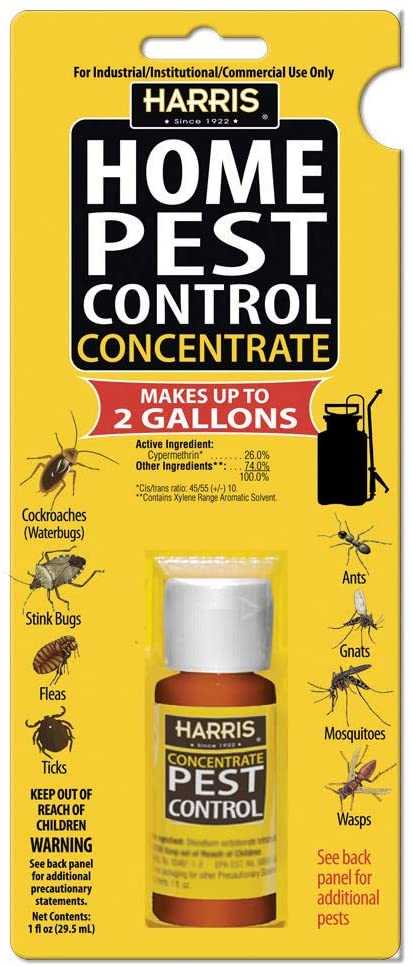Mastering the Art of Parasite Control: Proven Strategies for Long-Term Avoidance and Eradication
Insect invasions can be a relentless obstacle for home owners and organizations alike, needing a critical approach to effectively take care of and remove these undesirable burglars. By grasping the art of insect control through proven techniques for lasting avoidance and eradication, one can develop an aggressive defense versus possible threats. Comprehending the actions of bugs, applying integrated pest administration methods, and making use of natural solutions are simply a few crucial elements vital to attaining enduring success in this endeavor. Nevertheless, the intricacies of keeping cleanliness, carrying out normal assessments, and diligent tracking play just as essential duties in sustaining a pest-free atmosphere. As the fight versus insects proceeds to evolve, adopting a detailed approach becomes vital in safeguarding your building from potential damage.
Understanding Insect Behavior
To effectively implement parasite control methods, it is important to comprehend the intricate habits exhibited by different pests in various environments. By researching these behaviors, bug control professionals can determine the most vulnerable factors in the pest's life cycle to target interventions extra successfully.
For example, rats like mice and rats are nighttime creatures that like dark, secluded rooms close to a food resource. a1 portland bed bug exterminator. Knowing this, insect control specialists can focus on securing access points and eliminating food attractants to deter these insects. In comparison, pests such as cockroaches prosper in cozy, humid locations with accessibility to water. By addressing dampness concerns and sealing splits and holes, invasions can be considerably minimized.
Implementing Integrated Insect Administration
Executing Integrated Pest Monitoring entails using an all natural technique to deal with insect issues by combining numerous control methods and approaches. This method stresses avoidance, tracking, and control of insects with a combination of biological, cultural, physical, and chemical interventions. By incorporating multiple strategies, Integrated Parasite Monitoring (IPM) intends to minimize making use of pesticides while efficiently managing pest populaces.
Avoidance is also a basic principle of IPM, concentrating on eliminating factors that bring in insects, such as food, sanctuary, and water. Routine surveillance and inspection are vital to detect insect invasions early and stop them from escalating.
Additionally, IPM advertises the usage of lasting and eco friendly bug control methods to lessen injury to non-target microorganisms and the surrounding ecological community - a1 commercial pest control portland. By adopting an Integrated Bug Management method, individuals and companies can successfully take care of bugs while minimizing dependence on chemical pesticides
Making Use Of All-natural Solutions
Structure upon the structure of Integrated Insect Management, a shift in the direction of making use of natural treatments provides a green strategy to pest control. All-natural treatments harness the power of nature to deter and eliminate parasites without the usage of extreme chemicals that can hurt the atmosphere, humans, and beneficial microorganisms.

Furthermore, growing a1 portland pest control bed bugs pest-repelling plants like marigolds, lavender, and mint around homes and yards can aid discourage pests normally. These plants produce odors that insects find unpleasant, driving them away without the need for chemical treatment.
Keeping Sanitation and Health

On a regular basis checking and cleaning up hard-to-reach areas such as behind appliances, under sinks, and in storage wardrobes is crucial for recognizing and getting rid of prospective insect habitats. Mess must be lessened as insects typically seek haven in stacks of items or debris. Applying a regular cleaning schedule and making certain all participants of the family or staff members are enlightened on appropriate health methods can go a long method in insect prevention. By keeping tidiness and hygiene standards, the atmosphere becomes much less congenial to bugs, eventually sustaining long-lasting pest control initiatives.
Regular Assessments and Monitoring
Routine examinations and keeping an eye on play an essential function in proactively recognizing and dealing with prospective parasite issues prior to they rise. By conducting routine examinations of both the interior and exterior of a property, bug control specialists can discover very early indicators of infestations, pest entrance points, and problems for parasite activity. Monitoring involves the use of traps, baits, and various other devices to track bug task degrees and varieties existing on the properties. This information is important for figuring out one of the most reliable therapy approaches and reviewing the success of parasite control strategies over time.
Constant monitoring permits the very early discovery of parasite troubles, allowing swift intervention to protect against extensive problems that can be expensive and difficult to eliminate. Furthermore, routine inspections and keeping track of assistance to abide by regulative needs and preserve a secure, pest-free atmosphere for passengers. Carrying out an aggressive technique through routine examinations and surveillance is a cornerstone of efficient bug administration, offering assurance and long-term security versus bug risks.
Verdict
Finally, understanding the art of insect control entails understanding pest habits, implementing integrated parasite management, using all-natural remedies, preserving sanitation and hygiene, and carrying out normal evaluations and tracking. By adhering to these proven methods for lasting prevention and elimination, people can effectively manage bug problems and develop a healthier and much safer atmosphere on their own and their environments.
To efficiently execute bug control approaches, it is important to comprehend the complex actions showed by numerous pests in different environments (a1 residential pest control portland or bed bugs). By researching these actions, parasite control specialists can recognize the most at risk factors in the parasite's life cycle to target treatments extra effectively
Implementing Integrated Pest Management entails making use of an all natural strategy to attend to bug problems by combining various control tactics and strategies. By keeping sanitation and hygiene standards, the environment comes to be less congenial to pests, inevitably sustaining long-lasting pest control initiatives.
By carrying out regular inspections of both the inside and outside of a building, bug control experts can discover early indicators of invasions, pest access points, and problems favorable to insect activity.